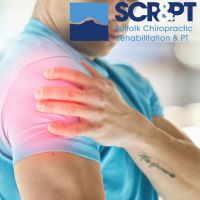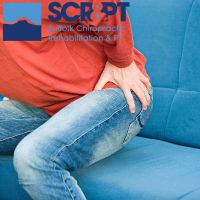Common Causes of Chronic Shoulder Pain
Chronic shoulder pain is a common issue that can significantly impact daily life. Understanding the underlying causes can help you seek appropriate treatment from an orthopedic doctor in Mastic, NY. Visit our website today!
Rotator Cuff Injuries
The rotator cuff is a group of muscles and tendons that stabilize the shoulder. Overuse, injury, or aging can lead to:
- Tendinitis: Inflammation of the tendons.
- Tears: Partial or complete tears in the rotator cuff can cause persistent pain and limited mobility.

Arthritis
Arthritis in the shoulder, particularly osteoarthritis, occurs when the cartilage in the joint wears down over time, leading to pain and stiffness. Rheumatoid arthritis, an autoimmune condition, can also cause chronic shoulder pain by attacking the lining of the joints.
Frozen Shoulder
Also known as adhesive capsulitis, frozen shoulder is characterized by stiffness and pain in the shoulder joint. This condition often develops gradually and can severely limit movement. It commonly affects people who have had their arms immobilized for an extended period.
Bursitis
Bursae are small, fluid-filled sacs that cushion the bones, tendons, and muscles around the shoulder joint. When these sacs become inflamed due to repetitive motion or injury, bursitis occurs, leading to pain and discomfort in the shoulder. Contact us to schedule an appointment!
Shoulder Impingement
Shoulder impingement occurs when the rotator cuff tendons are pinched during arm movements. This can lead to pain, swelling, and reduced range of motion. Over time, impingement can cause more severe issues, such as tendinitis or rotator cuff tears.
Seeking Treatment
If you’re experiencing chronic shoulder pain, consulting an orthopedic doctor in Mastic, NY, is essential. Treatment options may include:
- Physical Therapy: Exercises to improve strength and flexibility.
- Medications: Anti-inflammatory drugs to reduce pain and swelling.
- Injections: Corticosteroid injections to relieve inflammation.
- Surgery: In severe cases, surgical intervention may be necessary to repair damage.
Orthopedic Doctor in Mastic, NY
Chronic shoulder pain can stem from various causes, including rotator cuff injuries, arthritis, frozen shoulder, bursitis, and shoulder impingement. If you’re dealing with persistent shoulder pain, seeking help from an orthopedic doctor in Mastic, NY, can provide you with the relief and care needed to restore function and improve your quality of life. Early intervention is key to preventing further damage and ensuring a successful recovery. Visit our website to learn more!
Regaining Strength After a Broken Hip
A broken hip is a serious injury that can greatly affect your mobility and independence. However, with proper care and dedication to recovery, it is possible to regain strength and return to your daily activities. A comprehensive rehabilitation plan, overseen by an orthopedic doctor in Mastic, NY, is essential for a successful recovery. Contact our office today!
The Rehabilitation Process
Rehabilitation following a hip fracture is a crucial part of the recovery process. The goal is to restore mobility, increase strength, and prevent future complications. Here are the key steps:

- Early Mobility: After surgery, rehabilitation typically begins with early mobility exercises. These exercises help prevent blood clots, strengthen the muscles around the hip, and improve circulation. Your orthopedic doctor in Mastic, NY, may recommend light movements, such as sitting up in bed, standing, or using a walker for support as you start moving again.
- Physical Therapy: Physical therapy is a critical component of recovery. It is designed to help restore strength, flexibility, and balance, which are essential for regaining independence. During physical therapy, you may engage in a variety of exercises aimed at:
- Strengthening the Hip Muscles: Focused exercises target the muscles surrounding the hip joint, which helps stabilize the area and supports the healing process.
- Improving Flexibility: Stretching exercises can improve the range of motion in the hip, reduce stiffness, and prevent long-term limitations in movement.
- Balance and Coordination: Specialized exercises can improve balance and coordination, reducing the risk of falls and helping you regain confidence in your mobility.
Your physical therapist will work closely with your orthopedic doctor in Mastic, NY, to ensure that your rehabilitation program is tailored to your specific needs and progress.
Nutrition and Healing
Nutrition plays a significant role in your body’s ability to heal. Consuming a diet rich in essential nutrients can support bone healing and overall recovery. Consider incorporating the following into your daily meals:
- Calcium and Vitamin D: Both are crucial for bone health and repair. Dairy products, leafy greens, and fortified foods are excellent sources of calcium. Sunlight and fortified foods can help you get enough vitamin D.
- Protein: Protein is vital for muscle repair and recovery. Including lean meats, fish, eggs, and plant-based protein sources in your diet can aid in strengthening your muscles as you regain mobility.
- Hydration: Staying hydrated supports overall health and helps maintain joint flexibility, which is important during recovery.
Proper nutrition, paired with guidance from an orthopedic doctor in Mastic, NY, can promote faster healing and reduce the risk of complications. Schedule an appointment!
Gradual Return to Activities
Returning to normal activities after a hip fracture takes time and patience. It’s important to follow your orthopedic doctor’s advice to avoid overexerting yourself too early. A gradual return to activity is key to rebuilding strength and preventing re-injury.
- Weight-Bearing Activities: Depending on your progress, your doctor may recommend slowly introducing weight-bearing exercises as part of your rehabilitation. These activities help strengthen the hip and improve bone density, which is crucial in preventing future fractures.
- Daily Living Tasks: As your strength and mobility improve, your physical therapist will guide you through exercises that help you perform daily tasks, such as walking, climbing stairs, and dressing independently.
Your orthopedic doctor in Mastic, NY, will closely monitor your recovery and adjust your rehabilitation plan as needed to ensure you’re on track for a full recovery.
The Importance of Follow-Up Care
After a hip fracture, regular follow-up appointments with your orthopedic doctor in Mastic, NY, are essential. During these visits, your doctor will evaluate your progress, assess the healing of your hip, and make any necessary adjustments to your treatment plan. Follow-up care helps prevent complications, such as improper healing and ensures that you’re on the right path to regaining the full function of your hip.
In some cases, your orthopedic doctor may recommend additional treatments, such as medication to strengthen your bones or injections to alleviate pain. They may also assess your risk for future fractures and offer guidance on how to prevent them.
Orthopedic Doctor in Mastic, NY
Recovering from a broken hip requires dedication to a comprehensive rehabilitation program that includes physical therapy, proper nutrition, and gradual reintroduction to daily activities. With the guidance of an experienced orthopedic doctor in Mastic, NY, you can regain strength, improve your mobility, and return to your normal routine. Patience and persistence are key, and with the right support, you’ll be well on your way to a successful recovery and a higher quality of life. Visit our website to learn more!
